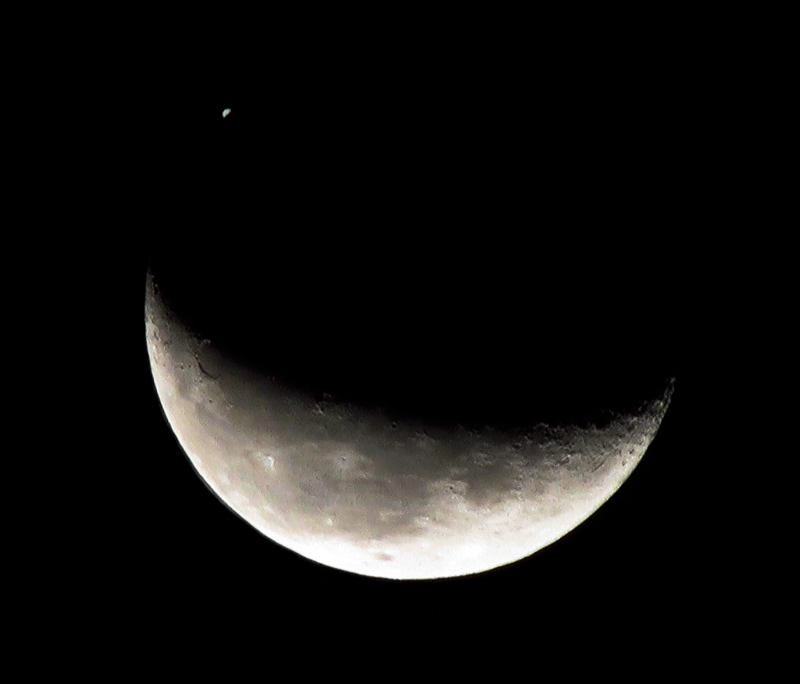This Saturday (Nov. 11), the bright star Regulus will briefly disappear behind the last-quarter moon, providing a treat for skywatchers across North and Central America.
This will be the second time in less than a month that this particular star has appeared to pass behind the moon in the sky, in an event known as a lunar occultation. On the morning of Oct. 15, Regulus spent up to 70 minutes behind the moon from our perspective on Earth. But Regulus isn't the only bright star to have spent some time lurking behind the moon lately — last Sunday (Nov. 5), the nearly full moon also occulted the orange star Aldebaran.
While the last two occultations coincided with dark skies, Saturday's occultation of Regulus will happen after sunrise. This means that it will be a bit more difficult to see and photograph. However, skywatchers who are lucky enough to experience clear skies that morning will get a rare, blue backdrop for the celestial sight. [Best Night Sky Events of November 2017 (Stargazing Maps)]

The recent trifecta of major, back-to-back lunar occultations has been a rare treat for astrophotographers like Victor Rogus, an amateur astronomer and Fellow of the Royal Astronomical Society, who captured spectacular photos and videos of Regulus playing "peekaboo" with the moon last month.
"I decided to put my antique, 3-inch Unitron refractor to work and see if I could make a video of the occultation of the magnitude 1.4 star Regulus," Rogus told Space.com in an email. "It was amazing to see Regulus pop out from behind the moon as dawn arrived."

The start and end times of any occultation — when the star disappears behind one limb of the moon and reappears from behind the other — varies by location. The timetable below offers a few examples of start and end times for Saturday's occultation of Regulus as seen from major cities along the path of visibility. For a more detailed list and a viewing map, check out this lunar occultation page by the International Occultation Timing Association.
Regulus will first disappear behind the moon for viewers in Japan, at about 11:46 p.m. local time (1446 GMT). However, the moon will be so close to the horizon that it may be difficult to see. Skywatchers in the Western Hemisphere will have a better view of the occultation, albeit in brighter skies as the sun continues to rise.
| LOCAL CIRCUMSTANCES FOR THE OCCULTATION OF REGULUS SATURDAY, NOVEMBER 11 | ||
|---|---|---|
| Location | Disappears | Reappears |
| Anchorage, Alaska. | 7:07 a.m. | 7:25 a.m. |
| Vancouver, B.C. | 8:39 a.m. | 9:14 a.m. |
| Los Angeles | 8:51 a.m. | 10:00 a.m. |
| Denver | 10:15 a.m. | 10:45 a.m. |
| Houston | 11:29 a.m. | 12:14 p.m. |
| Memphis, Tenn. | 11:39 a.m. | 11:53 a.m. |
| Savannah, Ga. | 12:46 p.m. | 12:58 p.m. |
| Tampa, Fla. | 12:40 p.m. | 1:15 p.m. |
| Mexico City | 11:34 a.m. | 12:35 p.m. |
| Guatemala City | 11:44 a.m. | 12:42 p.m. |
The sun may be high in the sky during the occultation, but the moon won't set below the horizon until early in the afternoon. To find out precisely where and when the sun and the moon will rise and set, check out this handy astronomy tool at timeanddate.com.
After Saturday's occultation, the next stellar event like this will occur on Dec. 3, when the "supermoon" occults Aldebaran once more for viewers in northeast Asia, Alaska and northwest Canada.